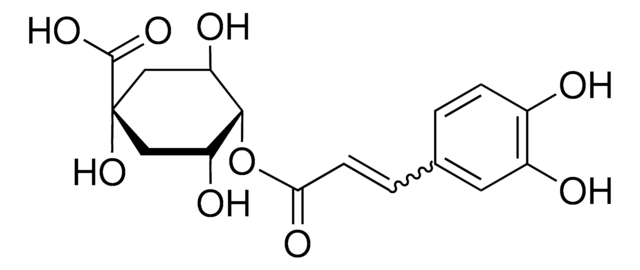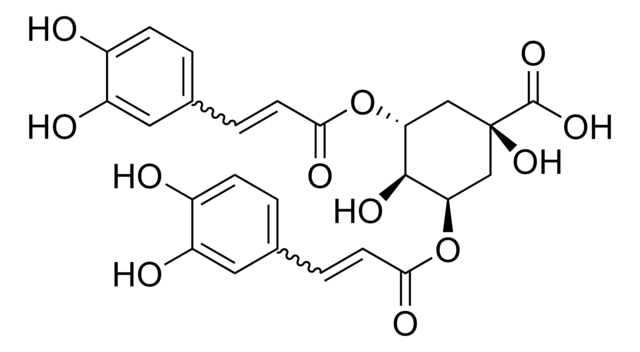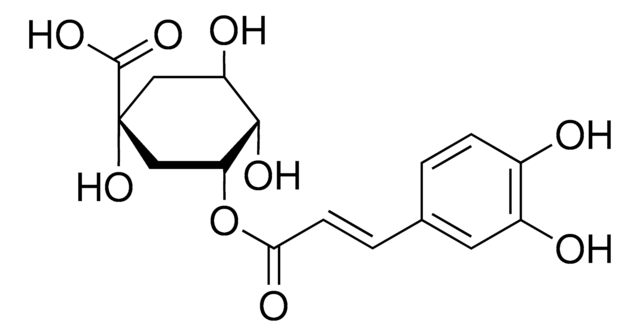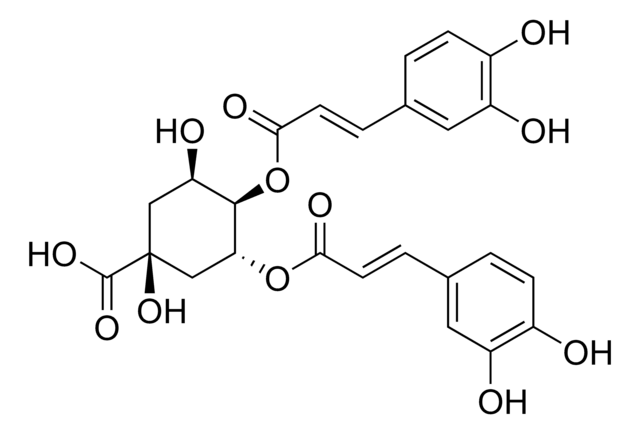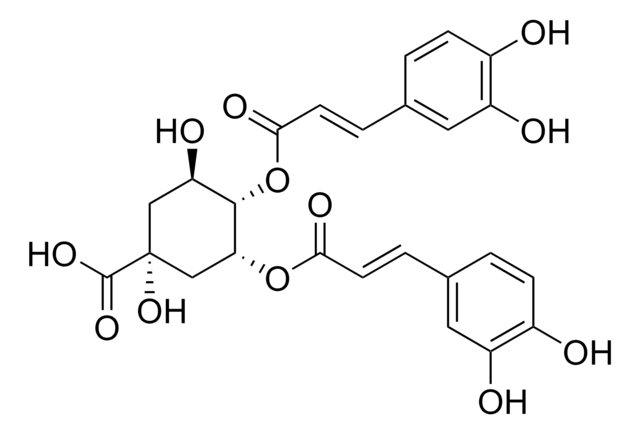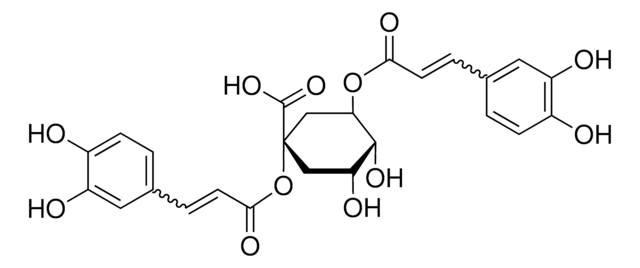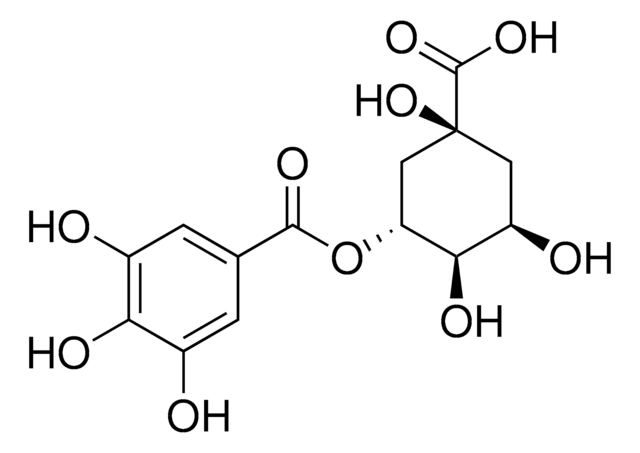94419
Neochlorogenic acid
from Lonicera japonica, ≥98.0% (HPLC)
Synonym(s):
5-O-(trans-3,4-Dihydroxycinnamoyl)-D-quinic acid, trans-5-O-Caffeoylquinic acid
About This Item
Recommended Products
biological source
Lonicera japonica
Quality Level
Assay
≥98.0% (HPLC)
form
powder or crystals
loss
≤3.0% loss on drying
application(s)
metabolomics
vitamins, nutraceuticals, and natural products
SMILES string
O[C@@H]1C[C@@](O)(C[C@@H](OC(=O)\C=C\c2ccc(O)c(O)c2)[C@H]1O)C(O)=O
InChI
1S/C16H18O9/c17-9-3-1-8(5-10(9)18)2-4-13(20)25-12-7-16(24,15(22)23)6-11(19)14(12)21/h1-5,11-12,14,17-19,21,24H,6-7H2,(H,22,23)/b4-2+/t11-,12-,14+,16-/m1/s1
InChI key
CWVRJTMFETXNAD-NXLLHMKUSA-N
Looking for similar products? Visit Product Comparison Guide
General description
Application
- to examine the phenolic content in the roots and aerial parts of Serratula centauroides using high performance liquid chromatography (HPLC) technique
- to study the anti-inflammatory response of dried plum in human synovial fibroblasts (hSF) and bone resorption in rheumatoid arthritic transgenic mice
- for the quantitative and toxicity analysis of green coffee bean extract on human liver carcinoma cell line (HepG2 cells)
Biochem/physiol Actions
Packaging
Storage Class Code
11 - Combustible Solids
WGK
WGK 3
Flash Point(F)
Not applicable
Flash Point(C)
Not applicable
Choose from one of the most recent versions:
Already Own This Product?
Find documentation for the products that you have recently purchased in the Document Library.
Customers Also Viewed
Our team of scientists has experience in all areas of research including Life Science, Material Science, Chemical Synthesis, Chromatography, Analytical and many others.
Contact Technical Service